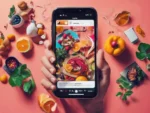In 1976, Richard Dawkins coined the word ‘meme’ in his book The Selfish Gene to explain how ideas evolve and are shared across different cultures. When the Internet connected different corners of the world, this exchange of cultural artifacts became much faster and a lot more efficient.
It’s hard to pinpoint when exactly the modern memes were born. All we know is that they started to gather steam in the late 2000s with the emergence of platforms like 9GAG. In later years, the rise of Facebook, Instagram, Tumblr and Twitter further advanced the meme culture.
Today, memes are everywhere. Sometimes it’s a boyfriend that’s a bit distracted. Other times, it’s Winnie the Pooh elaborating the difference between common and sophisticated language.
But memes aren’t just for ridiculing human behavior to get a good chuckle out of the viewers. They can be powerful marketing tools that brands can leverage to drive engagement on their digital channels.
‘Meme marketing’ is something that businesses should seriously consider.
Let me explain.
Your Marketing Needs Some Memes
Memes are about connection as much as they are about humor. They have the power to build online communities albeit for a short period. Consider the Bernie Sanders mittens meme that went viral last year. It allowed people to feel good, share a laugh and worked as a social glue in a politically turbulent time.
Surely, brands want to inspire a similar sentiment. Creating humorous pictures on regularly and cashing in on trends can help engage the audience, create a sense of association and even inspire brand loyalty.
Here are four reasons you need to work on your meme-making skills right away.
Memes Are Engaging
It is estimated Internet users spend 145 minutes on social media every day. These people are there to watch cat videos, share jokes and take their minds off everything that’s bothering them in real life.
On social media, 77% of users follow your pages to avail coupons and discounts. Since there are only so many promo codes you can post to generate activity, memes are a good way to reach out to customers who might not be aware of your brand.
Share a good meme and you’re almost guaranteed impressions, likes, shares, retweets and other forms of online interactions. Memes allow brands to engage customers without coming off as too ‘salesy’.
Even if the memes aren’t closely related to your business, they get your word out. And since first impressions are important, there’s nothing better than introducing yourself to potential customers with some good old fashion humor.
Memes Make Your Brand Relatable
Brands these days are using a more relaxed approach to customer communication, often utilizing a casual tone. Few have taken things a step further by adding some sass into the mix. All of this is done to make a brand less robotic and somewhat human.
Customers need to know that you don’t represent a stuck-up corporate entity but something that’s much more lively. This is where memes come in. Nothing lets the humanity of a brand shine through quite like humor.
There are different shades of meme marketing. Some brands even make memes at their own expense and gain a lot of traction as a result. Self-deprecating jokes are never not funny and people like brands that don’t take themselves too seriously. At the end of the day, comedy allows people to forge strong connections with businesses.
Memes Are Free
Ever wonder why there are so many memes on the internet? It’s because anyone can make them. You don’t even need basic photo-editing skills to make one. Meme generators will do the job for you. What you need to do is add text to a pre-built format. Once that is done, click ‘generate’ and your job is done.
Meme marketing requires little-to-no investment. Businesses can hire specialists they want to. Quality memes can do a world of good for your social media and therefore, hiring someone that specializes in this sort of thing wouldn’t be a bad investment.
However, even if you don’t have the resources for a dedicated memer, you can join in the fun. Anyone that keeps us with the popular trends and is social media-savvy can churn out decent memes. Perhaps this is the best thing about this entire practice.
Memes Can Help You Go Viral
What’s the holy grail of online marketing? Going viral. That’s it. A marketer dreams of creating content that will spread like wildfire and travel from screen to screen. But it’s hard to realize this dream with run-of-the-mill promotional posts on social media. Once again, marketing with memes gives you the perfect opportunity to make this happen.
One of the best case studies in viral marketing is Dos Equis beer’s “The Most Interesting Man in the World”. The advertisement featuring a bearded older gentleman with an outrageous voiceover was picked up by the internet and became one of the most popular memes to ever exist.
Overwhelmed by Digital Marketing?
Just released: my new book to help small businesses, entrepreneurs, and marketers master digital marketing in today’s digital-first world.
Drawing on my Fractional CMO experience, Digital Threads simplifies complex strategies into clear, actionable steps for success.
Transform your business today—grab your copy! Click the cover or button below to buy on Amazon.
Marketers invest a great bit of resources into creating content that would go viral. Of course, most would prefer something that’s directly related to their product like a deal or discount code. But that rarely happens. Memes are more shareable and they can become a symbol of your brand for days to come.
How to Get Meme Marketing Right
Memes add a bit of flavor to your entire marketing and they are quite easy to create. However, this doesn’t mean you can simply create one and expect a huge influx of visitors the next day. There’s a method to this madness.
Before jumping on the meme train, you need to strategize a bit. Good memes are a surefire way to get people talking about you. Bad memes will either go unnoticed or in the worst-case scenario, make your brand seem desperate and out of touch.
Following should be the five key aspects of meme marketing you should never ignore.
1. Timing is the Key
Just like a good punchline, a meme is delivered at the appropriate time. You need to capitalize on a popular trend. So keep an eye out for what’s happening on Facebook, Instagram, Reddit and Twitter.
Create a funny meme on something that’s in discussion and you will quadruple your chances of going viral. For instance, back in February when Godzilla vs. Kong craze was at its peak, the internet was flooded with the memes of the two fictional titans battling it out.
KFC decided to get in on the action and put its own spin on the rivalry while taking shots at its competitors McDonald and Burger King. It was a perfect tweet that got more than 155,700 retweets and 705,000 likes.
This is the level of reach that even marketing campaigns backed by heavy investment fail to achieve. But KFC made it happen with just a single meme. Along with the creativity and humor, it was the timing of this tweet that made it such a hit.
2. Don’t Go in Blind
Comedy works best when it’s delivered to the right audience. Show a comic strip with “husband and wife” jokes to a millennial and you’d only get looks of disapproval in return. In contrast, someone from an older generation would probably love that sort of humour.
Consider the age of your audience, their cultural backgrounds, race and economic class before putting out a joke. Just because your marketing with memes doesn’t mean it should be done on a whim with no thought going into the process.
Let’s say you are running the US Department of Health and Human Services’ Facebook Page. What you wouldn’t want to do is jump into a popular meme trend without first considering how receptive your audience will be to such a post.
Unfortunately, someone thought that would be a good idea. Although Doge is a popular internet icon, making him the mascot of a government healthcare program might not be the brightest of ideas. Health is a serious matter and the simple rule of ‘know your audience’ would have prevented this gaffe.
3. Be Relatable, Creative and Indirect
Memes work in a certain way. Someone in a corner of the internet comes up with a funny format. Often the material comes from a movie, TV show, news or anything that’s currently popular. People add their ingenuity to this format and voila, you have thousands of memes being shared within a few hours.
Among these, the memes that are the most relatable and creative stand out. The third ingredient of this recipe that’s essential for brands is being indirect.
Let’s go back to that distracted boyfriend meme. Several brands got on the bandwagon when this image became popular back in 2017.
Jimmy John’s put out their version of the meme but it failed to gain any traction as it lacked originality and was overtly promotional.
On the flip side, Penguin Random House’s meme was an instant hit as it was creative, relatable and didn’t seem like a lazy attempt at marketing.
4. Keep the Memes Aligned With Your Online Identity
A viral meme will get you traction on social media for a limited amount of time. But to get more long-term results from your meme marketing efforts, the content needs to support your online identity.
Perhaps no one has figured this out better than Wendy’s. The fast food chain was being sassy on Twitter before most of its competitors even figured out how the platform worked.
Over the years, Wendy’s has stayed consistent with its edgy, pop-culture savvy and offensive form of comedy. The restaurant has built an entire persona around ‘roasting’ (insulting) its customers and just being outright mean to everyone online. Wendy’s Twitter shares a wide variety of memes on an almost hourly basis.
These memes work because they are aligned with the company’s overall online persona. Basically, memes are to Wendy’s social media what fries are to Hamburgers.
5. Don’t be Desperate
Let’s be real. Nothing is worse than humor that is forced. As a marketer, you would feel compelled to get involved in a popular meme format. But sometimes it’s better to let it slide if you cannot come up with something funny.
Likewise, don’t insert your brand into popular trends where it doesn’t belong or you’d risk people laughing at you rather than with you.
McDonald’s UK put out a tweet back in 2018 that did the opposite of what meme marketing is supposed to achieve. The format came from the “say no more fam” meme that ridiculed strange haircuts.
The fast food chain made its version of the meme and you can see where the problem lies. The meme made no sense whatsoever and instead of coming across as funny and relatable, the restaurant only managed to embarrass itself on the internet.
Conclusion
Marketing has changed a great deal over the years. Brands can no longer afford to be just promotional, they need to be relatable as well. Even though your purpose is to sell products or services, there’s a need to make a genuine connection with the customers.
Comedy is a great way to start conversations, foster relations and then move ahead to promoting whatever is it that you’re offering. Meme marketing is a more subtle and indirect promotional strategy.
But before you start, you need to get to know your audience and figure out what they find funny. Not all your creations will be instant hits but that’s just fine. Remember to avoid creating something that people will find offensive. You also don’t want to seem desperate to get some clicks.
Being in tune with pop culture is also essential. Check what’s trending, create a timely meme and don’t be too promotional. People should be able to relate to the meme and most importantly, it should be genuinely funny.
Who knows? Maybe you will be able to craft a strong brand identity one meme at a time. The possibilities are endless.
Author Bio
Evelyn Johnson is a full-time cat lady and a part-time blogger. She writes about digital marketing, technology, social issues, and pretty much anything that’s in the now.
Hero photo by Sammy Williams on Unsplash





![11 Important Ingredients of a Comprehensive Social Media Strategy Plan [INFOGRAPHIC]](https://nealschaffer.com/wp-content/uploads/2013/10/people-discuss-about-graphs-and-rates-3184292-768x431.jpg)



